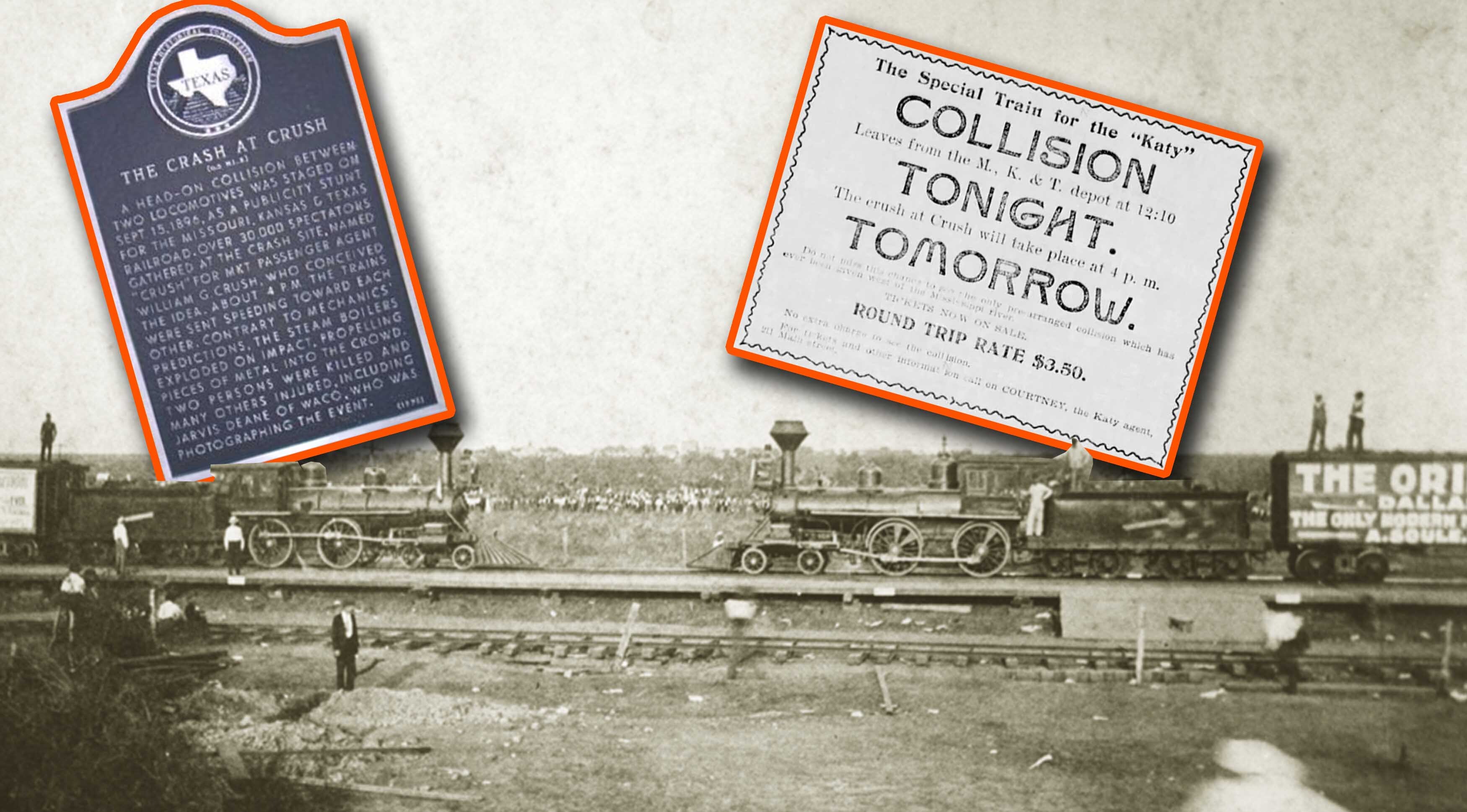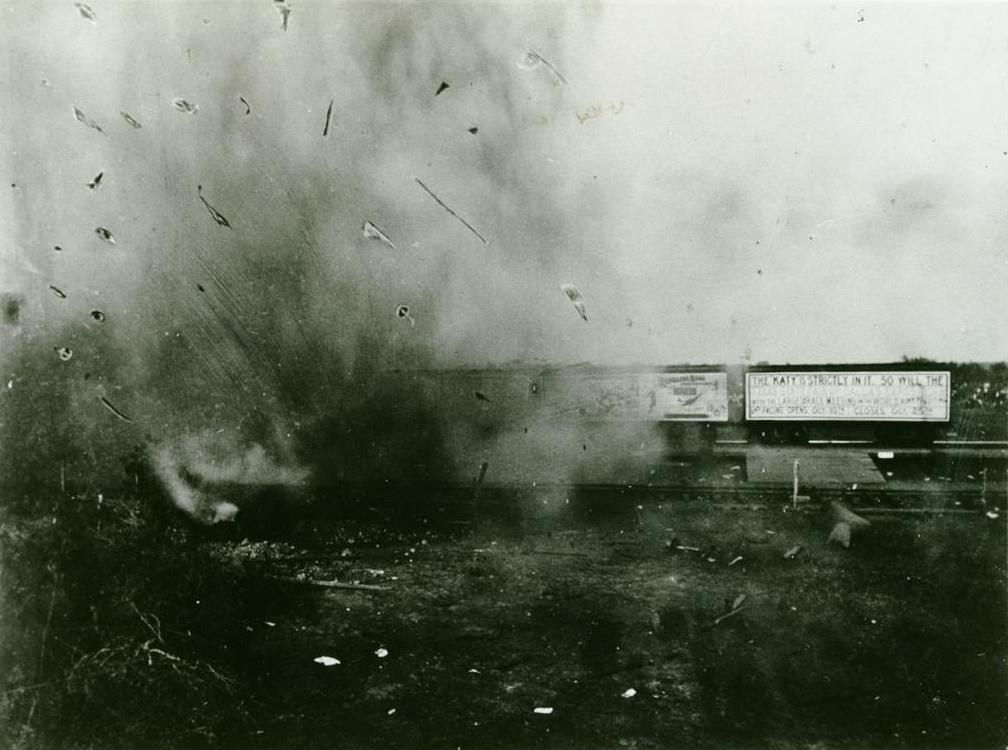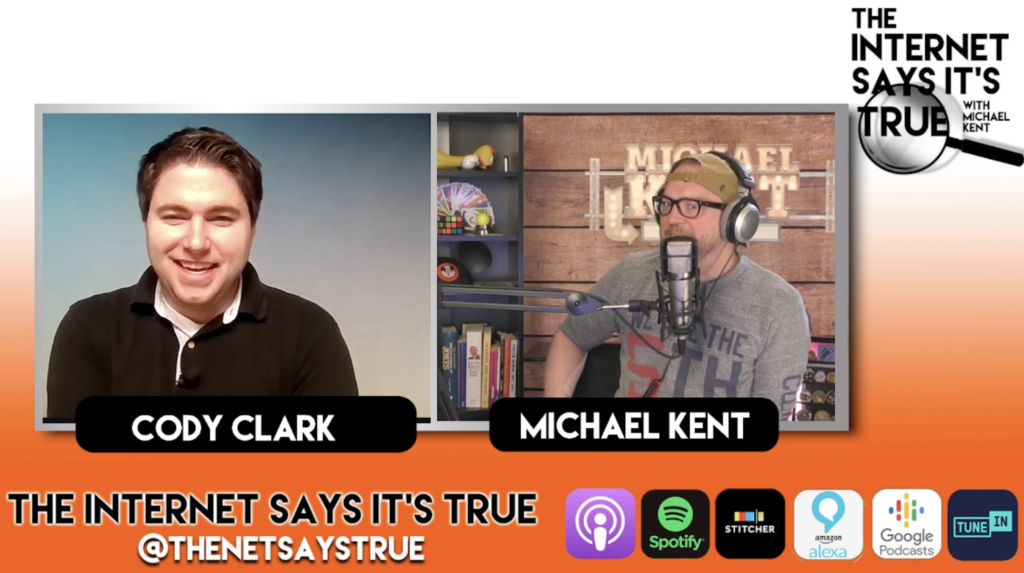North of Waco: The Crash at Crush
One of the stranger fascinations of humans is with things being destroyed. Whether it be a demolition derby, a “Dude Perfect” YouTube video, or trains being staged to crash into each other, we’re enthralled by destruction. In 1896, a promoter named William Crush staged a planned, unmanned train collision. It didn’t exactly go as planned. In this episode, we tell the story about the publicity stunt and then chat with Magician and Train Enthusiast Cody Clark!

In the early evening of September 15, 1896, a horrified crowd of onlookers ran away, screaming and covering their heads. It was a scene of pandemonium and it was all orchestrated by William Crush.
He had stolen the idea for his stunt from something that happened that May in Ohio. Only about 45 minutes from where I’m recording this podcast, there was a brand new road-side park outside of Lancaster, Ohio. Buckeye Park was owned by the Columbus and Hocking Valley Railroad and the whole idea was that people from nearby cities would take day excursions on the railroad to this park. It had picnic pavilions and a small lake where people could go swimming. They claimed to be the only resort in Central Ohio where people could bathe in pure spring water and enjoy a toboggan slide. A man named A.L. Streeter had come up with a strange idea: staging a train crash for publicity. The newspaper reported “Realizing that a very small percentage of the people at large have ever witnessed a railway collision and believing that such an exhibition would prove most interesting and attractive to the masses, the management of the C. H. V. & T. company have completed arrangements with Mr. A. L. Streeter for such a demonstration as the opening attraction of their famous pleasure resort, Buckeye Park.” It wasn’t exactly a new idea. Mr. Streeter had come up with the idea the year before, and proposed it in Illinois, and then Cleveland, but both of those events fell through. Buckeye Park was finally going to be the place to stage his spectacle, so he had a special 1-mile section of track built next to the park in a way that everyone at the park would have a great view of the crash. Admission would be free, but the railroad would make money on the passes to get people to and from the park back to the nearby cities of Lancaster and Columbus. Around 4:30pm, two retired steam locomotives were crashed into each other at speed of around 50 miles per hour. The men operating the trains jumped to safety as the trains got close and the crowd gasped and yelled. It was a huge success. The crowd was somewhere in the area of 20,000 people and the railroad made a lot of money, both on that day, and from the notoriety about the park.
Meanwhile, a railroad agent in Texas was taking note. His name was William George Crush and he worked for the M-K-T line, The Missouri-Kansas-Texas Railroad. It was commonly referred to as “The Katy.” Crush was a General Passenger Agent for the railroad and had a brilliant idea to pitch to the board. And by “brilliant,” I mean it was just A.L. Streeter’s idea that he did earlier that year. But Crush was going to make it bigger and better than ever.
The M-K-T line was trying to promote it’s Dallas to Houston Passenger route. Some say the purpose was to promote train safety. What we do know is that there had been several horrible wrecks on the railroad in recent years and as the modern marvel of train travel was becoming more commonplace, people were taking trains slightly less. They needed a marketing initiative to reinvigorate the public and make them aware of the MKT line. Crush pitched the idea of the staged crash to the board at Katy and they loved it. They set the date for September 15, 1896 and began promoting the event.
The crash would be between two engines that were scheduled to be retired. The 35 ton steam locomotives were being replaced with newer 60-ton engines and would be scrapped or sold, so two decommissioned Baldwin 35-ton steam engines were chosen – numbers 999 and 1001. One was painted green and the other red and they went on a press tour across the country, leaving leaflets advertising the event.
Crush chose the perfect spot for the crash. In a prairie just about 15 miles north of Waco, near the town of West, Texas, there was a natural amphitheater where onlookers could gather on a hill. It would be the perfect place for the spectacle to take place as the crowd could be 200 yards from the crash, but still see it perfectly. So the M-K-T built a spur off of their main line that was about 4 miles long. They didn’t want this crash to effect their day to day operations, so – like in Ohio – the crash would happen on a makeshift rail line created just for the event.
Before long, an entire small makeshift town had been created there in the middle of nowhere – only connected to society by train. They built a train depot and a 2,100 ft platform, a large grandstand 200 yards away from the tracks and a press box for photographers just 100 yards away. They dug two wells for fresh water. There were even bandstands and stages for politicians to speak. They rented a tent from the Barnum and Bailey Circus and arranged for an entire midway with food, games, carnival attractions and vendors. The makeshift town was named after the man who put it all together – Crush, Texas. And for that one day, Crush, Texas had the second largest population in the whole state.
Because of the lengthy promotion and the trains going across the country to promote the event, people came from as far away as New York City to see what was being advertised as the “Crash at Crush.” For just $3.50, the M-K-T line would sell you a ticket to Crush from anywhere in Texas. On crash day, September 15, there were somewhere between 40 and 50,000 people in attendance. 33 trains had arrived 12 minutes apart to bring the people to the event. Others arrived by horse and buggy. It looked like a huge success. But the main event hadn’t happened yet.
The crowd at the makeshift one-day town of Crush, Texas was at least 40,000 people. So big, that the 4pm crash time had to be delayed by an hour because the huge crowd was pushing too close to the railroad track for safety. The local police could barely control the mass of people.
At 5pm, the trains presented a photo op for photographers. The green and red engines, pulling 3 rail cars each, slowly inched toward each other and met in the middle before the crowd. The engineers got out and shook hands. Then they were slowly backed up 2 miles in each direction, 4 miles between them. William Crush rode back and forth in front of the crowd on a white horse. He had taken every precaution for safety.
Those safety precautions included chaining the cars together because the couplers themselves wouldn’t hold the cars together during a crash. The cars themselves were filled with railroad ties, presumably to weigh them down and keep them from going flying. The engines themselves were thought to be safe as well, even though they were essentially fast moving pressure cookers. They were designed to keep the boilers from rupturing. And this was something that the MKT board brought up. They said a ruptured boiler could act like a bomb. The Katy engineers assured that there was no way the boilers would blow.
The track had been prepared with miniature rockets at intervals that would ignite as the trains ran over them. This was to help make sure that the trains were traveling at the right speed to meet in the middle – they were just used as signals. So when Crush, on his white horse, dropped his arm with his white hat, that was the signal to both Engineers to open the steam to a pre-arranged setting. They started chugging along, slowly at first, but quickly gaining speed. The track was laid into a bowl, so both trains were running downhill from their starting positions. As they reached around 45 miles per hour, the engineers leapt from their cabins, leaving the empty trains hurling down the track toward each other.

Jarvis Deane, a photographer from Waco, was at the photographers stand just 100 yards from the point of impact. He captured photos of the trains at the moment of impact. The crowd screamed as the two 35-ton engines sped from each direction and met in front of the crowd in a huge crash at around 58 miles per hour. Shrapnel, huge pieces of steel, an entire half of one of the trains’ driving wheels, bolts, and broken wood were instantly being thrown toward the crowd. Something had gone horribly wrong.
It turns out that the boilers on both of the trains had instantly exploded on impact. It was thought that trains would just rise up in the center when they hit, but instead, they flattened into each other, causing the boilers to rupture and turn all of the surrounding wood and metal into red-hot missiles flying toward the crowd of people.

Jarvis Deane, the photographer, got hit directly in the face with a bolt. It entered his eye and lodged in his brain. The driving wheel that was thrown into the air traveled something like 2,500 feet, landing in the crowd. People ran in every direction. A 10-pound section of brake chain went flying like a red-hot clothesline across the crowd, hitting Ernest Darnell in the head. He just was a teenager and died instantly. Another rocketing piece of steel fractured the skull of John Overstreet’s daughter. She survived for around an hour and died on the ride home. The official death toll was just three, but there were dozens more injuries. Pieces of wood and steel ripped into legs and backs. Many others were injured from burns when they scrambled toward the wreck to grab hot metal souvenirs.
As I mentioned before, photographer Jarvis Deane suffered a blow from a flying bolt. It hit him in the eye and lodged into his brain. Somehow, he lived and instructed his brothers to continue taking photos for him at the event. He kept his photography business open until his retirement 5 years later.
The brass at The Katy Line were angry. Crush had promised a safe event and instead, the headlines in the paper were all about the tragedy. They fired William Crush at the first opportunity. They paid huge settlements to the families of the victims, and gave the injured people lifetime passes on the M-K-T railroad. The government of Texas used the event to ban staged train wrecks, which – by the way – continued in many other states. But when they looked at the numbers, Crush’s event was a huge success. It got the train line in every newspaper, and since the event was an advertised crash, the general public didn’t necessarily blame the train line for the injuries and deaths. Train ticket sales in Texas saw a spike. After looking at the event and its success, The Katy line rehired William Crush who continued working for the company until his retirement in 1940.
One strange thing came out of the crash that immortalized it. And I’ll leave you with this. The famous ragtime composer Scott Joplin was in the area performing during the crash. There’s some speculation that he was actually at the event. Others just say he heard about it in the local papers. But he was so moved by the event that he wrote a new ragtime piece, called “The Great Crush Collision March.” It’s a standard ragtime song, but then – pardon the pun, goes off the rails at the end of each verse as it mimics the sounds heard at the event. If you listen closely, you’ll hear the sound of the whistles, of the trains hurling toward each other, and of the Great Crash at Crush.

Bonus episodes and content available at http://Patreon.com/MichaelKent
Review this podcast at https://podcasts.apple.com/us/podcast/the-internet-says-it-s-true/id1530853589
For special discounts and links to our sponsors, visit http://theinternetsaysitstrue.com/deals

